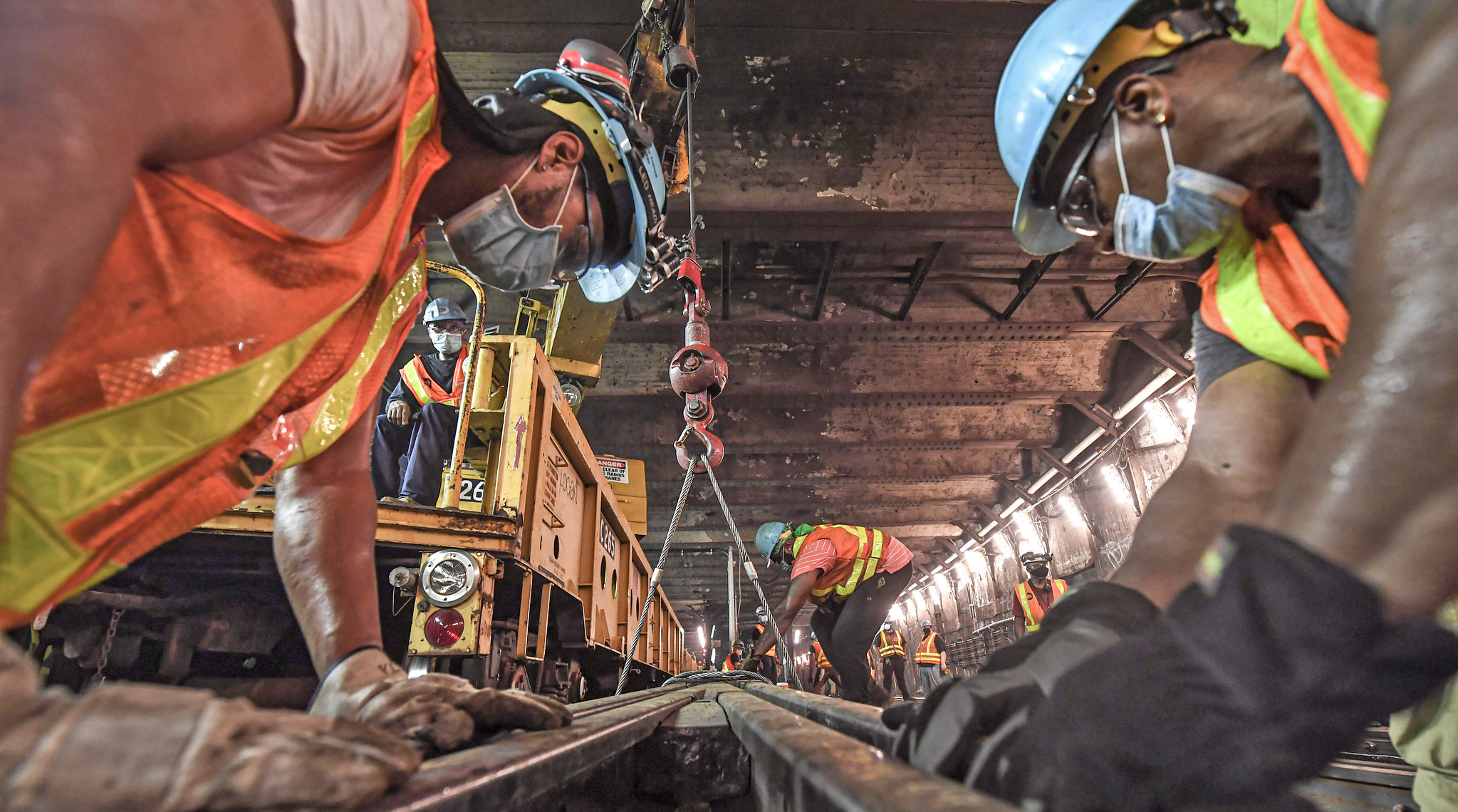
"The MTA is exploring ways to fix an infamous chokepoint that slows trains entering and exiting Brooklyn via the Manhattan Bridge, issuing an earlier-than-expected request for companies to tell the agency how to untangle the DeKalb interlocking, one of the most stress-inducing track jumbles in the entire subway system."
"At the DeKalb interlocking, trains are thrust into a complicated dance that inevitably slows them to a crawl. Manhattan-bound Q trains have to merge with tracks that also carry N trains, and cross tracks carrying the D train to the south side of the bridge."
"This dance is performed without computerized signals, and instead relies on nearby MTA employees in a signal tower with deliriously out-of-date technology who keep track of where the trains are at all times and ensure the tracks are in place to move each train to the place it needs to go."
"The MTA made a lot of hay out of its plans to upgrade the interlocking as part of the signal upgrades on the N/Q/R/W from Astoria to Brooklyn in the 2025-2029 capital plan."
The MTA is addressing the problematic DeKalb interlocking, slowing train operations between Brooklyn and Manhattan. The agency issued a request for information to gather industry feedback on modernizing signal and train control systems, linking it to upcoming upgrades on the Sixth Avenue and 63rd Street lines. Currently, the DeKalb interlocking operates without computerized signals, relying on outdated technology managed by MTA employees. Plans for improvement are part of a broader signal upgrade initiative in the 2025-2029 capital plan, which aims to enhance operational efficiency.
Read at Streetsblog
Unable to calculate read time
Collection
[
|
...
]